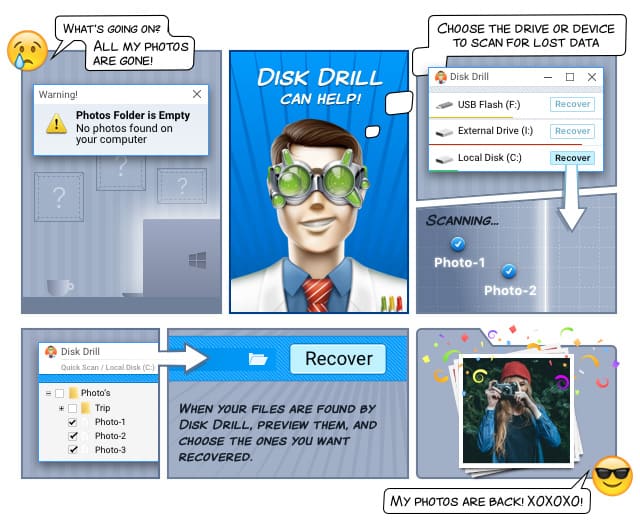PST (Microsoft Outlook Personal Folders)
Created by Microsoft for use with Microsoft Exchange Client, Windows Messaging, and Microsoft Outlook, the PST file format is used to store messages, calendar, and other data from Microsoft Exchange Server for offline use and long-term storage purposes. Over the last few years, Microsoft has been rethinking their support for open-source software and related development practices. The PST file extension is no exception to this, and Microsoft offers the necessary technical information required to read and write the contents of a PSD file on their website.

They also have written an excellent overview of the format, explaining in great detail what is a PST file, including information about its structure, support, and key components. What you need to know is that a. pst file is a binary file format used by all email applications from Microsoft, and that it’s based on the Exchange data store, a proprietary database environment. Inside every PST file is a hierarchy of folders, which corresponds to the messages on the mail server. Each folder then contains all associated messages, including attachments and metadata. Most PST files that you come across these days use Unicode encoding, but you may also stumble upon a PST file created using a very old version of Outlook. Such file would be ANSI-based, which means that it wouldn’t support non-standard characters.
How to Open PST Files?
All email applications from Microsoft support the PST file format, including Microsoft Exchange Client, Windows Messaging, and Microsoft Outlook. Because most people and businesses already rely on these applications, they’re also the best way how to open PST files. In the latest version of Outlook, all you need to do is open the File tab, choose Open & Export, and then select the Open Outlook Data File option. The content of the imported PST file will appear at the bottom of your Folder pane, inside the Outlook data file folder.
If you don’t want to use Outlook or any other email application from Microsoft, you have several options how to view PST files. Gmail users will appreciate the free Outlook migration app from Google, which imports everything stored inside a PST file, including emails, contacts, and calendar data, to Gmail. A more versatile solution is PST File Viewer, a robust PST file inspector with support for HEX analysis, forensic analysis, and message export.
How to Recover Deleted PST Files?
Even though PST files can be accessed remotely, Microsoft strongly advises against it because it may lead to file corruption. Many people don’t listen to this advice, which often leads to lost PST files and a big headache. People also tend to overly rely on the way the PST file format handles deleted emails. Instead of immediately discarding them, the space which the mail occupies is marked as unallocated. This makes it possibly to recover recently deleted emails with relative ease. The problem is that one never knows which emails can still be recovered and which are forever lost.
As such, it’s a good idea to adhere to strict data loss prevention policies and practices as a way how you can protect yourself against user error. To protect yourself against hardware failure and data loss caused by Malware, we recommend a complete data recovery suit, such as Disk Drill. This fantastic software from CleverFiles is no stranger to the PST file format, just like it’s no stranger to more than 200 other file formats. It also comes with several highly useful tools—all of which can make your life easier and your data better protected.

